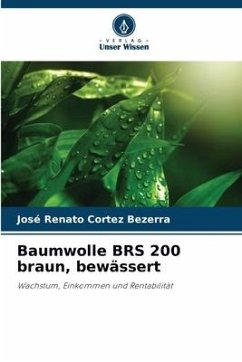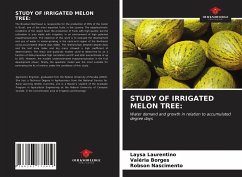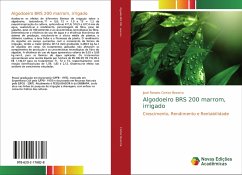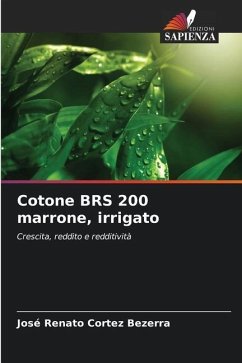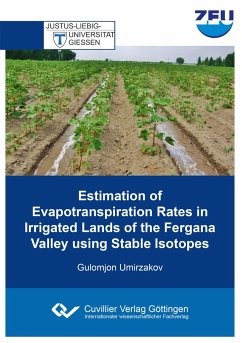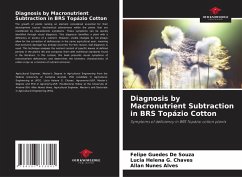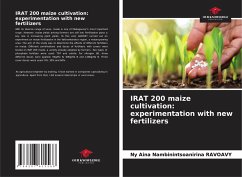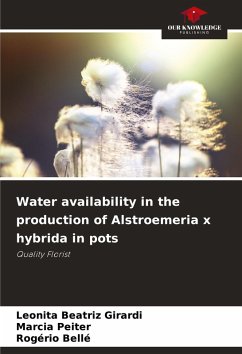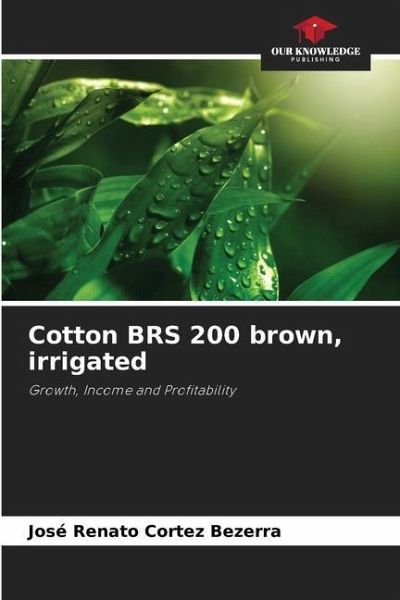
Cotton BRS 200 brown, irrigated
Growth, Income and Profitability
Versandkostenfrei!
Versandfertig in 6-10 Tagen
36,99 €
inkl. MwSt.

PAYBACK Punkte
18 °P sammeln!
The effects of different irrigation rates on cotton were evaluated by testing, T1 = 0.8; T2 = 1.0 and T3 = 1.2 of crop evapotranspiration, applying 411.6, 514.5 and 617.4 mm of water, evaluating the yield, percentage of fiber, boll weight, 100-seed weight and fiber technological characteristics. The water use efficiency and economic efficiency of the production system were determined by studying the average plant height, stem diameter, leaf area and plant phytomass. Seed cotton yield increased with increasing irrigation rate, with the highest rate (617.4 mm) producing 3,289.5 kg.ha-1 of seed c...
The effects of different irrigation rates on cotton were evaluated by testing, T1 = 0.8; T2 = 1.0 and T3 = 1.2 of crop evapotranspiration, applying 411.6, 514.5 and 617.4 mm of water, evaluating the yield, percentage of fiber, boll weight, 100-seed weight and fiber technological characteristics. The water use efficiency and economic efficiency of the production system were determined by studying the average plant height, stem diameter, leaf area and plant phytomass. Seed cotton yield increased with increasing irrigation rate, with the highest rate (617.4 mm) producing 3,289.5 kg.ha-1 of seed cotton. The treatments applied did not affect the production components and the technological characteristics of the cotton fiber. Water use efficiency (WUE) ranged from 0.53 to 0.60 kg.mm-3, for all water rates applied. The treatments presented a net revenue per hectare of R$ 386.99; R$ 732.89 and R$ 1,140.37 for treatments T1, T2 and T3, respectively, with benefit/cost ratio of 1.59; 1.83 and 2.12. An effect was observed on the growth variables studied.



